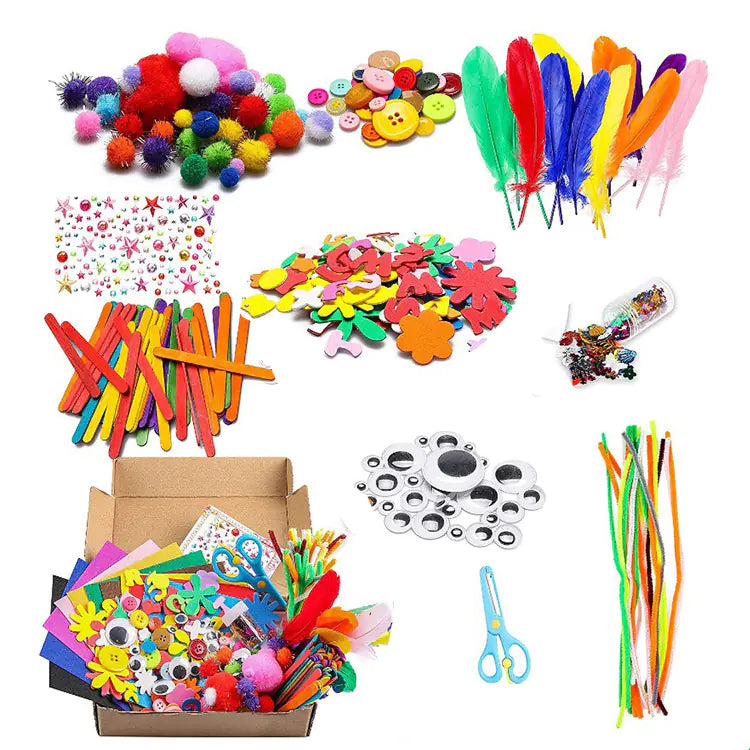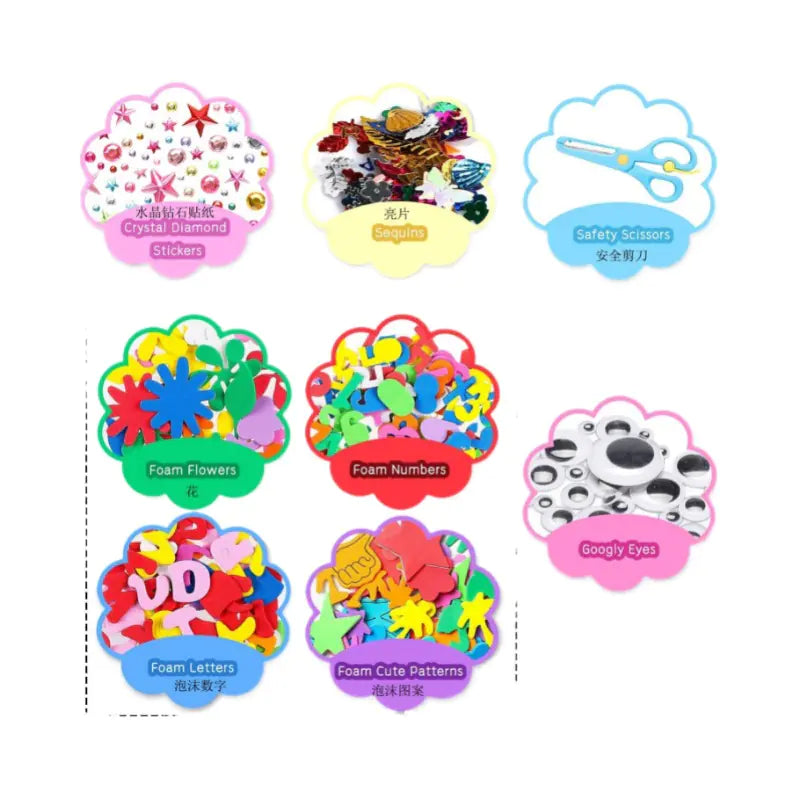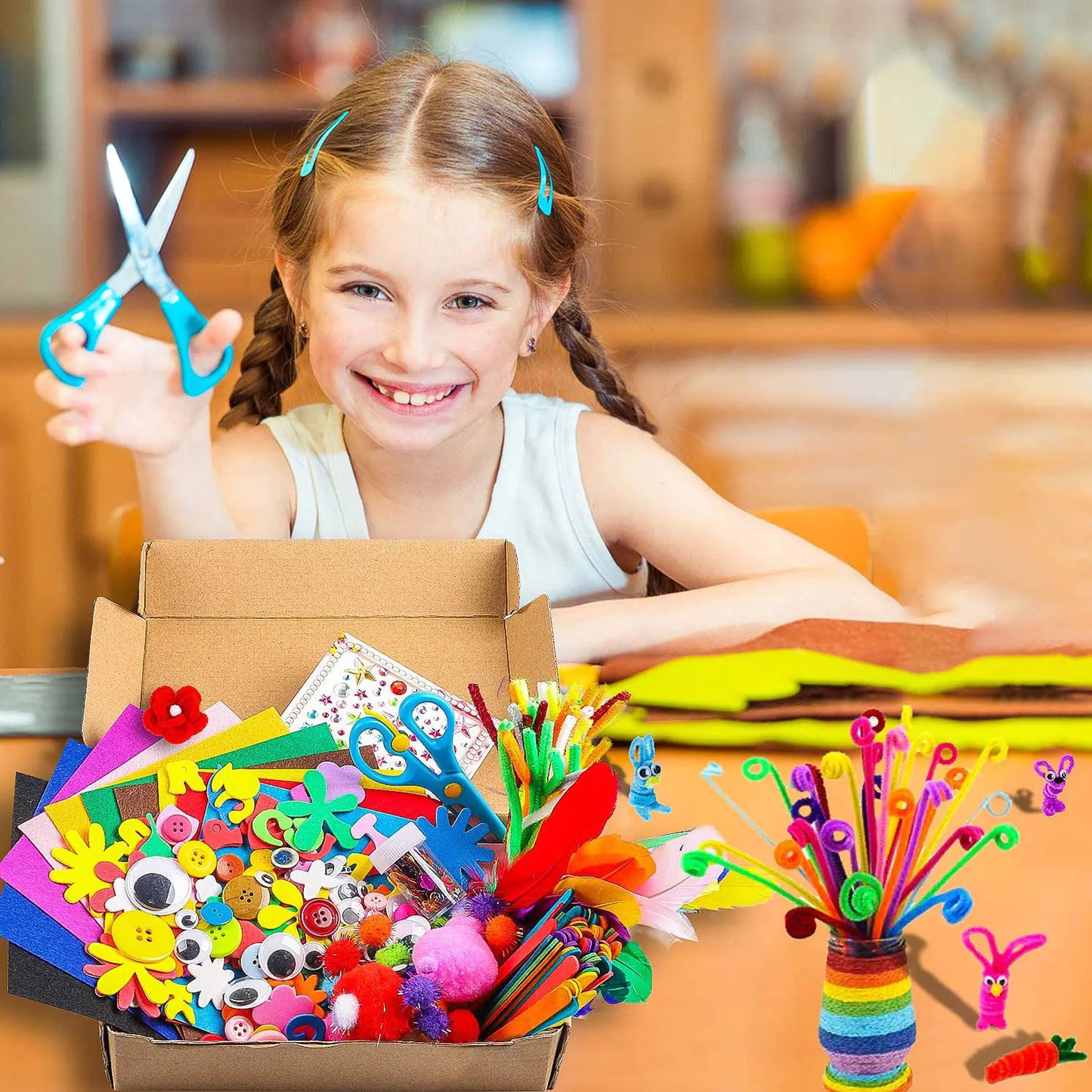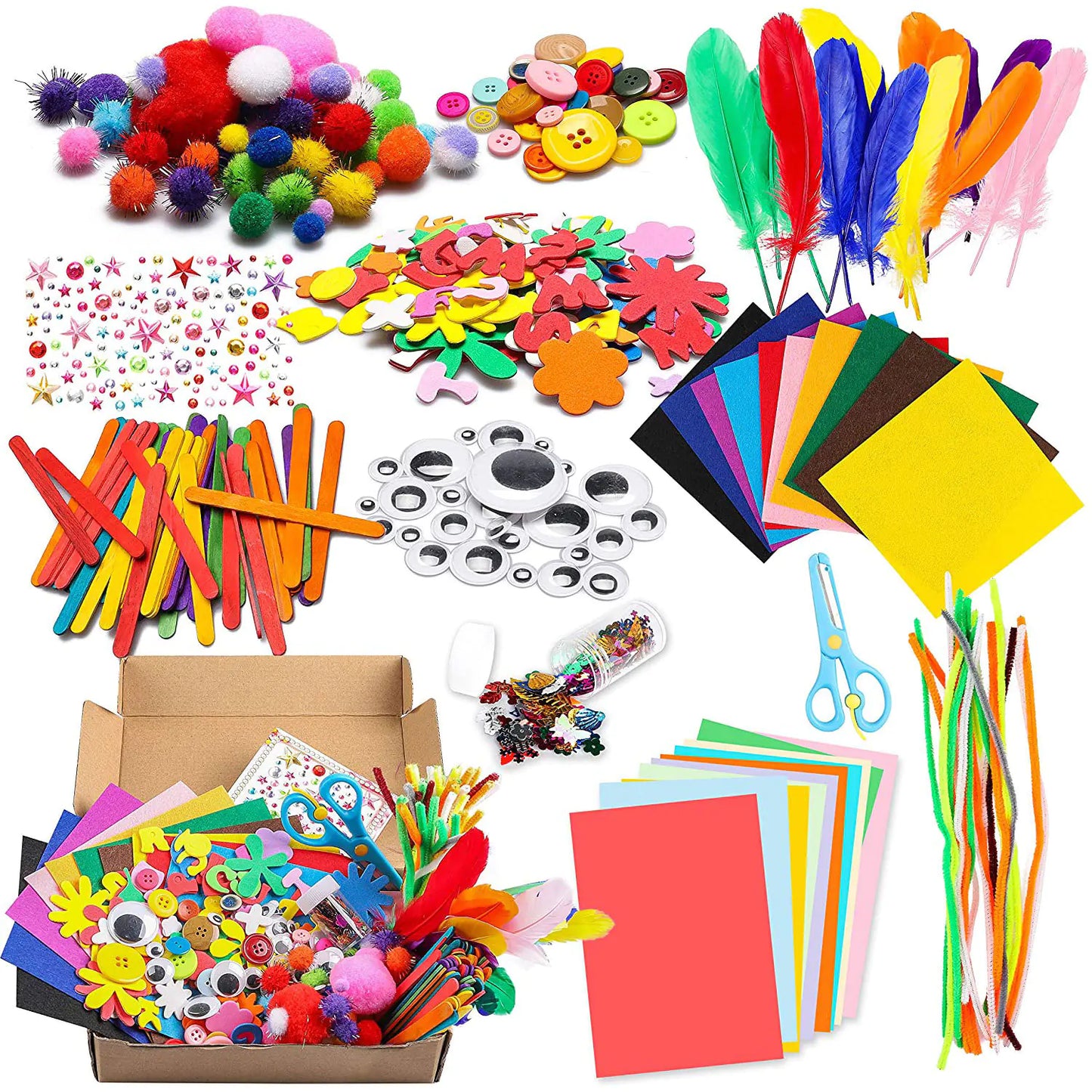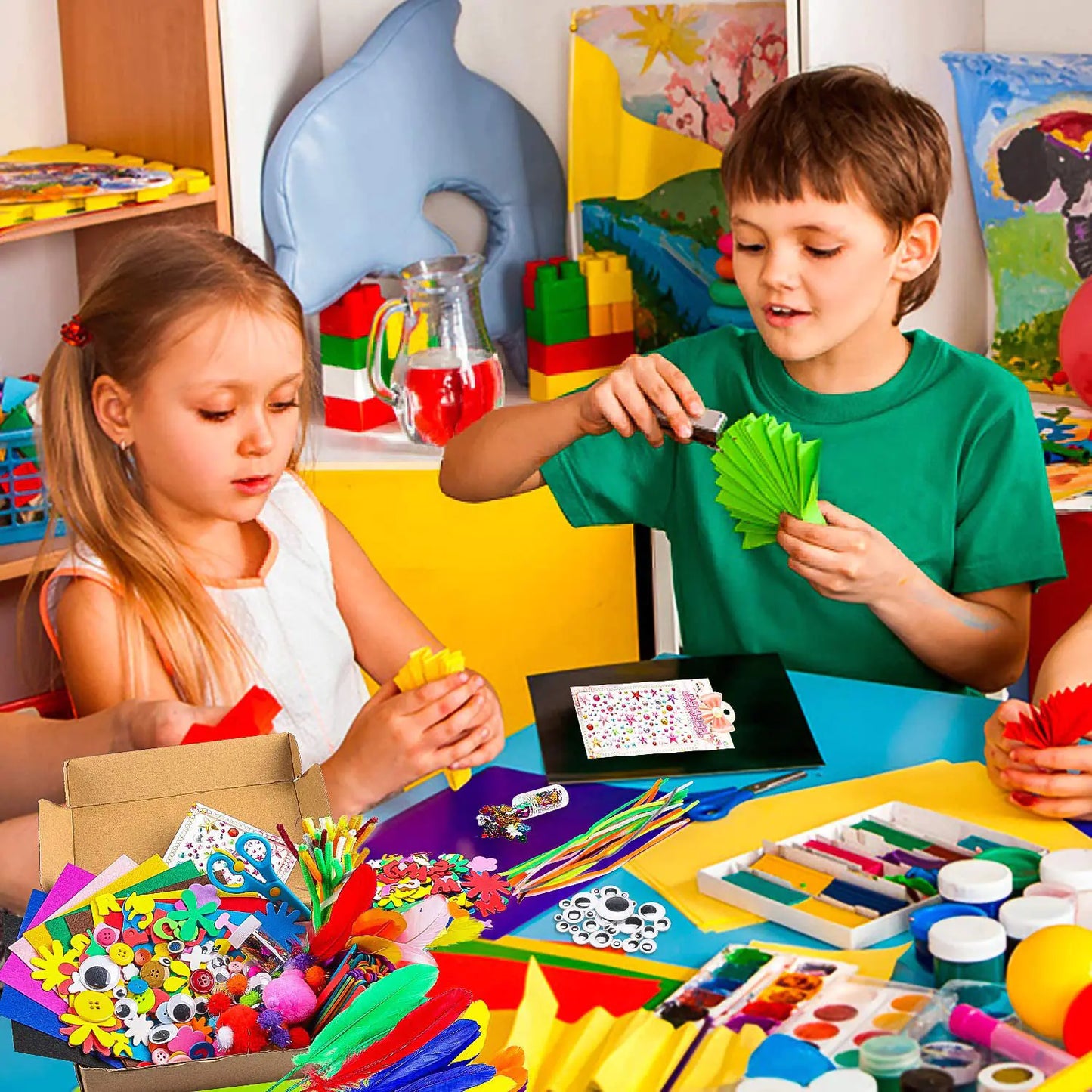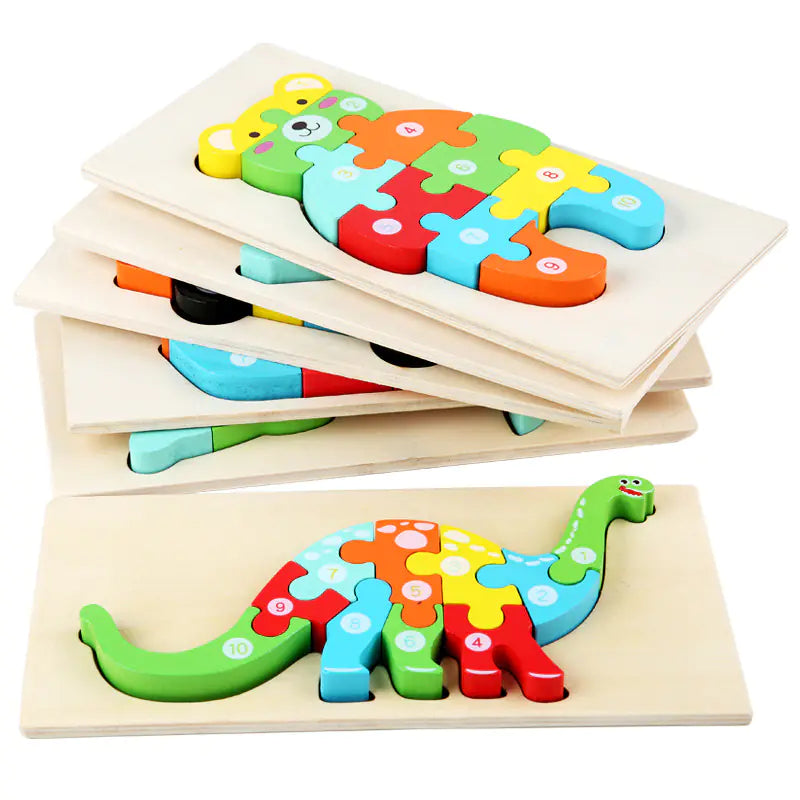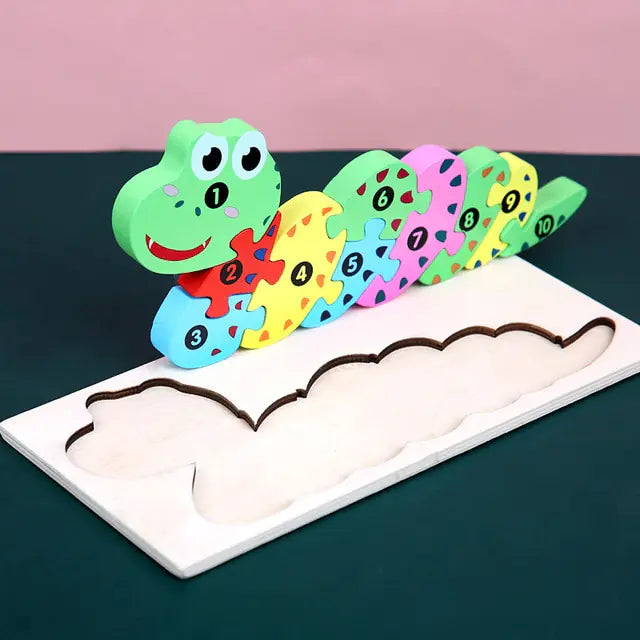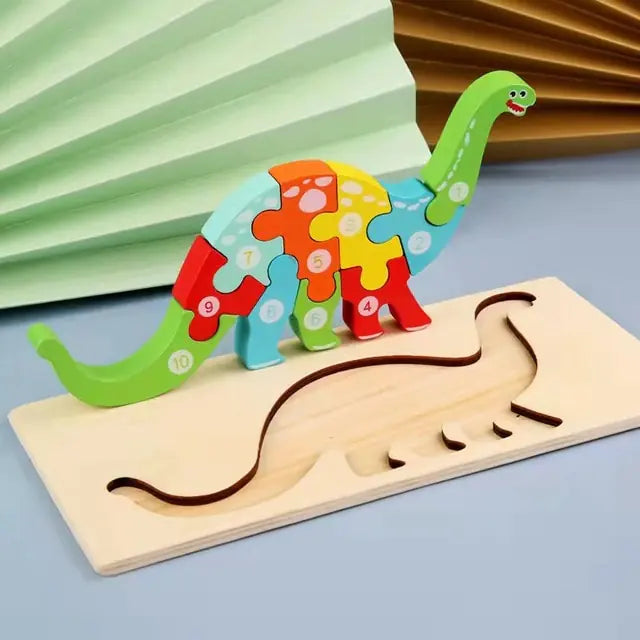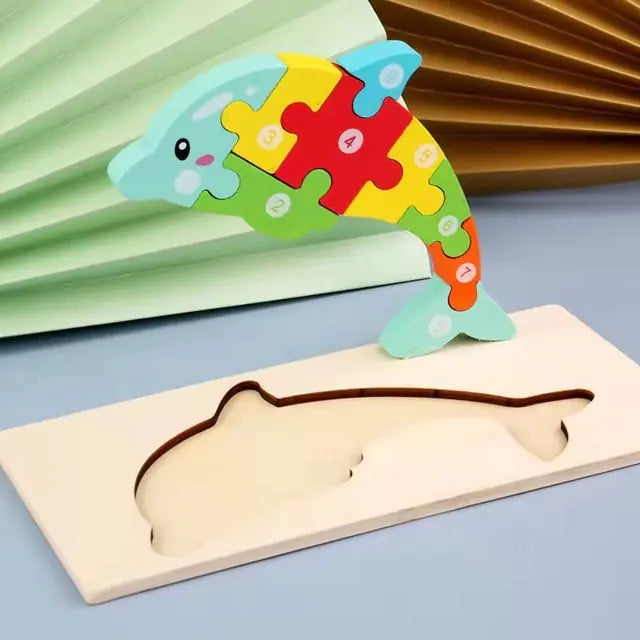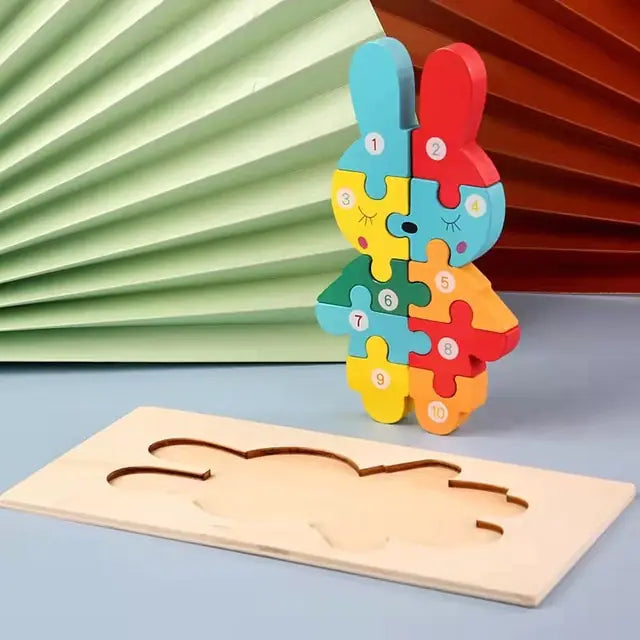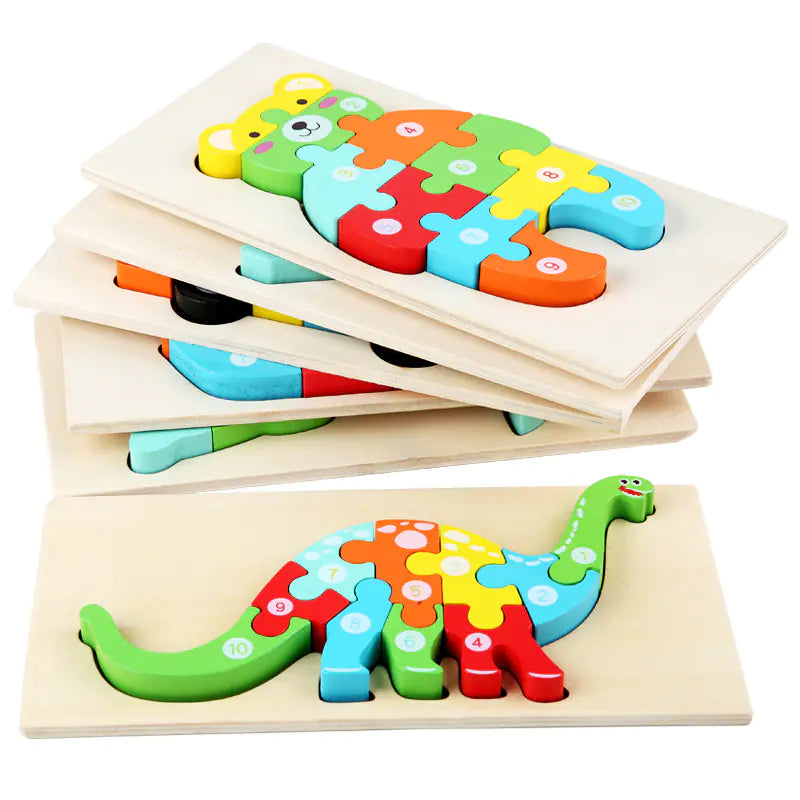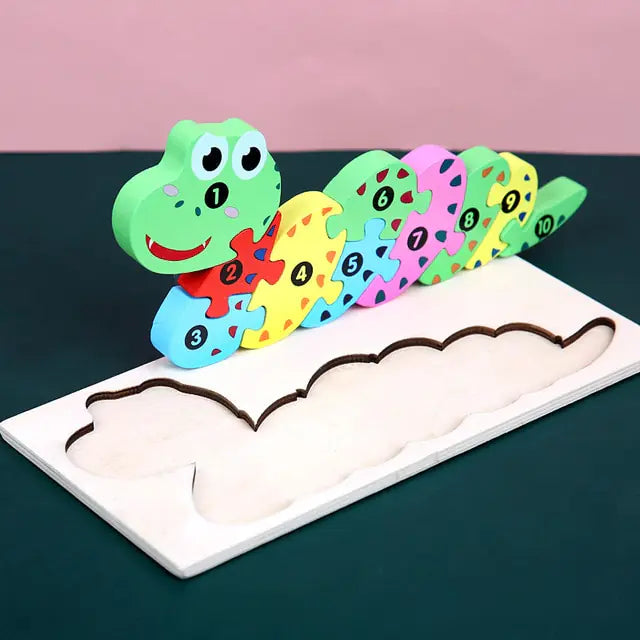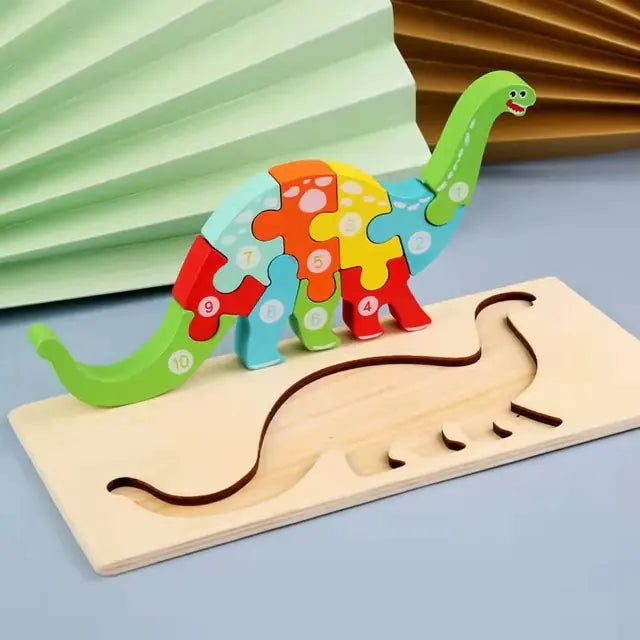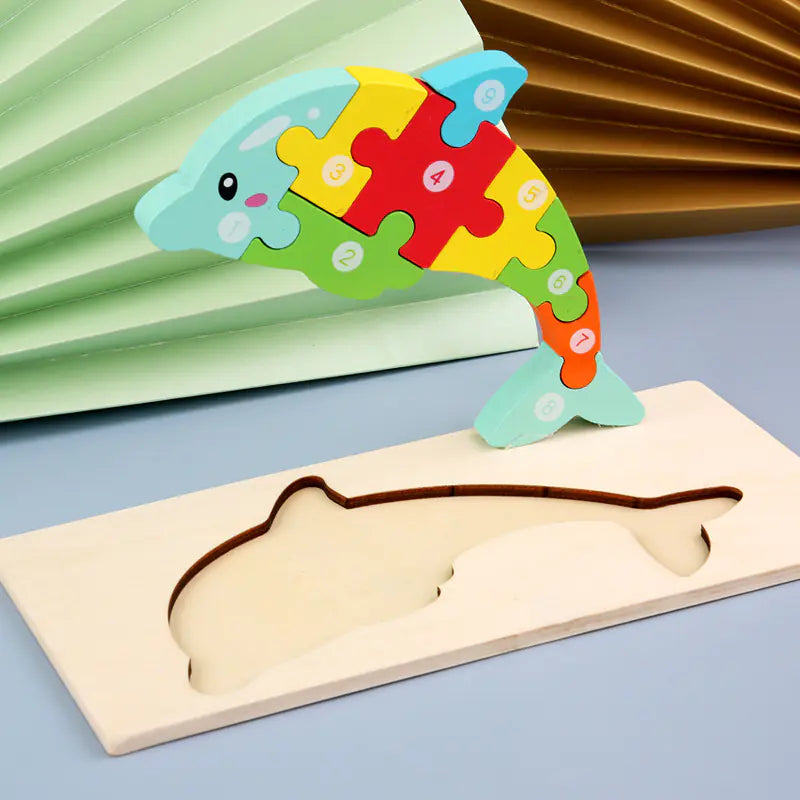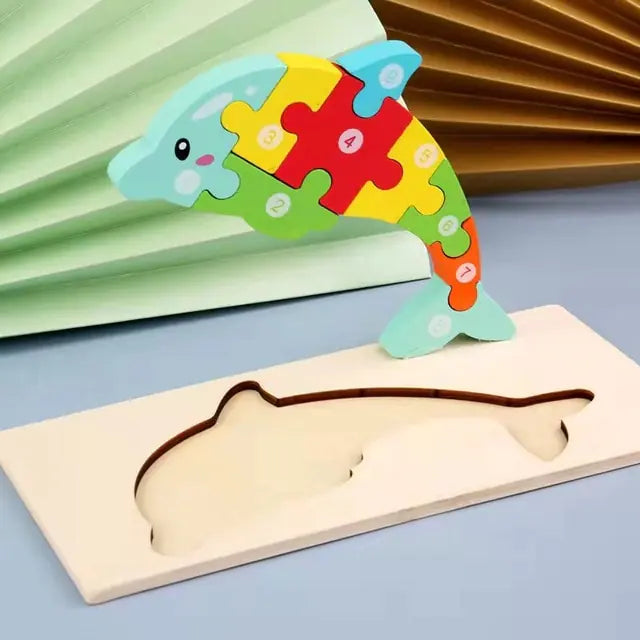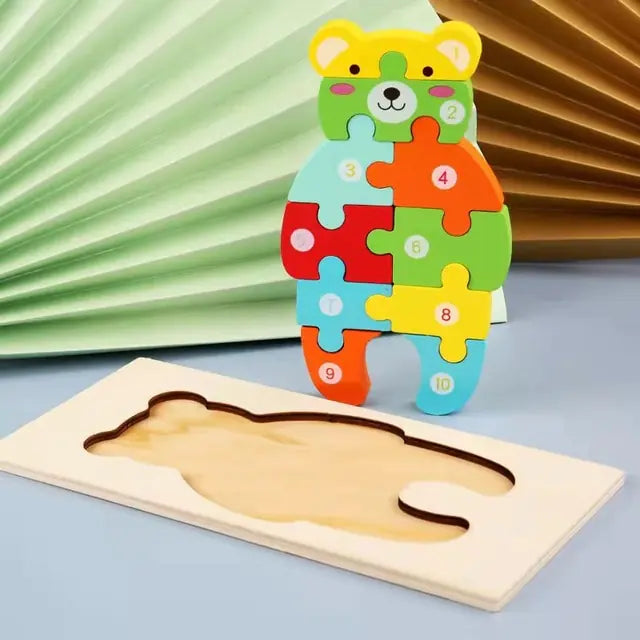In a world where environmental consciousness is more important than ever, teaching children about sustainability and stewardship of the Earth can begin with play. Educational toys offer a fun and interactive way to introduce young minds to environmental concepts and practices. This article explores how various educational toys, from recycling games to science kits, can engage children in learning about the environment and inspire them to care for our planet.
Eco-Friendly Playtime: Educational Toys That Teach Sustainability

Sorting Games for Recycling Awareness
I've found that one of the most engaging ways to teach kids about recycling is through sorting games. These games are fun and instill a sense of responsibility in our little ones. By sorting different materials into bins labeled 'paper,' 'plastic,' 'metal,' and 'compost,' kids learn to identify recyclable items and understand the importance of separating waste.
Why Sorting Games Work:
- They're interactive and hands-on.
- Kids learn through play, which enhances memory retention.
- Encourages teamwork and communication when played in groups.
Remember, the goal is to make recycling a natural part of their daily routine, and these games are a fantastic starting point.
As a parent, I love seeing my child's excitement when they correctly sort an item. It's a small victory but represents a significant step towards a more sustainable future. Plus, many of these games are made with eco-friendly materials, which adds another layer to learning about sustainability.
Gardening Kits for Little Green Thumbs
I've found that gardening kits are a fantastic way to nurture a love for nature in kids. They get to dig in the dirt, plant seeds, and watch their efforts bloom into beautiful flowers or even tasty veggies. It's a hands-on experience that teaches patience and responsibility as they learn to care for their growing plants.
Watching a seed transform into a plant is magical for children, and it's also a great science lesson. With a gardening kit, they can observe the stages of growth from seedlings to full-grown plants. Plus, it's an opportunity to discuss the importance of plants in our ecosystem.
Here's a quick list of benefits gardening kits offer:
- Encourages an appreciation for the natural world
- Teaches about the life cycle of plants
- Instills responsibility through regular care and maintenance
- Provides a tangible connection to the source of food
Gardening is more than just a fun activity; it's a way to instill eco-conscious values from a young age. By getting their hands dirty, kids learn the value of nurturing life and the role they can play in sustaining the environment.
Eco-Crafts: Repurposing Household Items
One of the most rewarding ways to connect kids with environmental responsibility is through eco-crafts. It's all about turning the old into new, and there's no better way to teach recycling and repurposing than by doing it with fun projects. Kids love getting creative, and when they can turn a cardboard box into a spaceship or a plastic bottle into a bird feeder, they're learning valuable lessons about sustainability.
By using everyday items that might otherwise end up in the trash, we're not just crafting; we're instilling a mindset of resourcefulness and environmental stewardship.
Here's a quick list of eco-craft ideas to get you started:
- Build a bee hotel from bamboo sticks or old tubes
- Create a cardboard tube marble run
- Design a bird feeder from recycled materials
- Assemble a simple ecosystem with a homemade terrarium
These activities keep the kids engaged and spark conversations about why we recycle and how we can help the Earth. It's a win-win for fun and the environment!
Hands-On Learning: Interactive Toys for Environmental Education

Science Kits: Exploring Renewable Energy
I've found that one of the most engaging ways to introduce kids to the concept of renewable energy is through hands-on science kits. These kits allow children to experiment with wind, solar, and water power in a way that's educational and a lot of fun. Building a miniature wind turbine or a solar-powered car can spark that initial curiosity and lead to a deeper understanding of how we can harness natural resources for our energy needs.
Here's why I love these kits for my kids:
- They encourage problem-solving and critical thinking.
- Kids learn about real-world applications of science and math.
- It's a great way to spend quality time together, learning and experimenting.
By using these kits, we're not just teaching our kids about energy; we're also instilling a sense of responsibility towards the environment. It's a win-win situation where they get to play and learn about sustainability at the same time.
Water Filtration Models: Understanding Clean Water Access
As a parent, I'm always on the lookout for toys that not only entertain but also educate. Water filtration models are a fantastic way to teach kids about the importance of clean water and how it's obtained. These interactive toys allow children to experiment with filtering dirty water, making the concept of water purification tangible and understandable.
Building a home water filtration system can be fun and enlightening. It's a hands-on approach encouraging kids to think critically about water pollution and sustainability. Plus, it's a great way to integrate STEM activities into outdoor play, nurturing their curiosity and appreciation for nature.
By using water filtration models, we can help our children grasp the challenges of accessing clean water in many parts of the world. This understanding fosters empathy and a sense of global responsibility.
Here's a simple activity to get started:
- Gather materials like plastic bottles, cotton balls, sand, and gravel.
- Assemble the filter layer by layer, discussing the purpose of each material.
- Pour the dirty water into the top and watch the filtration process.
- Talk about how this model relates to real-world water purification systems.
This activity teaches environmental science and provides a practical lesson in problem-solving and engineering. It's a win-win for both fun and learning!
Wildlife Habitats: Building and Observing
I've found that one of the most engaging ways to instill respect for our planet in kids is through creating wildlife habitats. It's a hands-on approach that teaches about the environment, responsibility, and care. Building a simple bird feeder or an insect hotel from recycled materials can be a fun weekend project. It's incredible to watch your little ones get excited as they observe the comings and goings of their new backyard friends.
- Here's a quick list of wildlife habitat projects you can do with your kids:
- DIY bird feeders using recycled materials
- Building a bee hotel to learn about pollination
- Crafting birdseed ornaments to attract various bird species
- Setting up a small pond for frogs and other aquatic wildlife
By engaging in these activities, children not only learn about the ecosystems they are creating but also develop a sense of stewardship for the living things they are helping. It's a win-win for education and the environment!
Fostering Creativity and Responsibility with Pretend Play

Role-Playing with Eco-Friendly Costumes
One of the most engaging ways to teach kids about the environment is through role-playing with eco-friendly costumes. It's a blast to see them dress up as their favorite animals or nature heroes, and it's even better knowing that these costumes are made with sustainable materials. By embodying these characters, kids naturally learn about the importance of protecting our planet.
Eco-friendly costumes can range from recycled materials to organic fabrics, ensuring that playtime is fun and kind to the Earth. Here's a quick list of benefits:
- Encourages empathy for wildlife and nature
- Sparks conversations about environmental issues
- Promotes creativity and imaginative play
Remember, every choice we make can have a positive impact on the environment, and choosing eco-friendly costumes for role-play is a simple yet effective step.
Whether it's for Halloween, a school play, or just everyday fun, opting for eco-friendly costumes supports both our children's education and the health of our planet. Let's make every playtime an opportunity to inspire and educate!
Kitchen Sets with a Twist: Composting and Recycling
One of the most engaging ways to introduce kids to sustainability is through play, especially with kitchen sets that come with a twist. These sets include pots and pans and feature compost bins and recycling stations, turning pretend play into a powerful learning experience. Kids learn the importance of separating waste and the basics of composting while whipping up their imaginary feasts.
- Compost bins teach decomposition and soil health
- Recycling stations encourage sorting and understanding material lifecycles
- Play food items are often made from eco-friendly materials
By incorporating these elements into playtime, we're laying the groundwork for environmentally conscious behaviors that can last a lifetime.
It's a simple yet effective way to start conversations about the environment. We can ask our little chefs questions like, 'Where does this peel go after we're done with it?' or 'How can we reuse this container?' This hands-on approach makes the abstract idea of sustainability tangible for young minds.
Puppets and Storytelling for Environmental Advocacy
I've found that storytelling is one of the most captivating ways to instill a sense of environmental responsibility in kids. And what better way to bring those stories to life than with puppets? Puppets can be powerful tools in teaching children about conservation, wildlife protection, and caring for our planet.
Toys like eco-friendly puppets not only spark imagination but also serve as characters in stories that can discuss complex topics like climate change in a way that's accessible to kids. Here's a quick list of benefits:
- Encourages empathy by personifying nature
- It makes learning about the environment interactive
- It helps kids remember important environmental lessons
By using puppets, we're not just teaching facts; we're creating memorable experiences that can shape a child's perspective on the world around them. It's a playful approach with a serious impact.
And when it comes to selecting toys, I always lean towards those made from sustainable materials. It's a small choice that reinforces the message of our stories. So, next time you're looking for a gift or an educational tool, consider a puppet that can help carry the torch of environmental advocacy to the next generation.
STEM Toys: Sparking Curiosity in Young Minds

Engineering Kits for Sustainable Solutions
I've always believed that the best way to learn is by doing, and that's precisely what engineering kits for sustainable solutions offer. These kits are more than just toys; they're a hands-on experience that encourages kids to think critically about the environment and the role of engineering in creating a sustainable future. By building models that mimic real-world eco-friendly technologies, children can grasp complex concepts like renewable energy and waste management in a fun and engaging way.
- Here are a few examples of what these kits can include:
- Models of wind turbines or solar panels
- DIY water filtration systems
- Recyclable material construction sets
These activities not only foster a love for STEM fields but also instill a sense of responsibility towards our planet. It's about empowering our kids to be the problem-solvers of tomorrow, using their creativity to make a difference.
And let's not forget the practical skills they develop along the way—problem-solving, teamwork, and perseverance. These are life skills that will serve them well, no matter what path they choose. So, when you're looking for a gift that keeps on giving, consider an engineering kit that's all about building a greener future.
Coding Games with Environmental Missions
As a parent, I always look for ways to blend fun with learning, especially regarding important topics like the environment. That's where coding games with environmental missions come into play. These games are engaging and instill a sense of responsibility towards our planet. Kids learn to solve problems by tackling virtual challenges such as cleaning up digital oil spills or optimizing recycling processes.
One of the best parts about these games is that they often require puzzle-solving skills, which are crucial for cognitive development. Here's a quick list of benefits your kids can gain from these games:
- Improved logical thinking and problem-solving abilities
- Enhanced understanding of cause and effect
- Knowledge of environmental issues and sustainability
- Motivation to learn more about science and technology
Remember, the skills kids develop through these games can translate into real-world environmental advocacy and innovation. It's a win-win for education and the Earth!
Math and Time Toys for Energy Conservation
One of the most engaging ways to teach kids about energy conservation is through hands-on activities involving math and time. Educational toys focusing on these concepts can make learning about energy use and sustainability fun and impactful. For instance, a toy clock that can be programmed to show the energy consumption of different household activities helps kids understand the relationship between time and energy use.
Toys that simulate energy consumption and savings can also be a hit. Imagine a playset that lets kids manage a mini-grid, where they can see the effects of different energy sources and learn to balance energy demands with supply. It's a playful approach to a serious topic and can help cement the idea of energy conservation in their young minds.
Here's a quick list of what to look for in these toys:
- Interactive features that simulate real-world scenarios
- Challenges that require problem-solving and critical thinking
- Visual aids that help explain complex concepts
By incorporating these toys into playtime, we're not just keeping our kids entertained; we're preparing them for a future where they can be informed and responsible energy consumers.
Global Awareness: Toys That Teach About Different Environments

Geography Puzzles and Games
As a parent, I'm always on the lookout for toys that entertain and educate. Geography puzzles and games are a fantastic way to introduce our little ones to the vast world around them. These games make learning about different countries, cultures, and landscapes an adventure.
By incorporating geography into playtime, we're setting the stage for a lifetime of curiosity and respect for our planet.
Here's a quick list of geography-themed games that have been a hit in our home:
- Map puzzles that challenge kids to place countries in the correct location
- Board games that take players on a journey around the world
- Card games that teach facts about different nations
These games provide hours of fun and build a foundation for global awareness that will serve our children well as they grow into world citizens.
Cultural Dolls and Figures: Celebrating Biodiversity
I've always believed that playtime is more than just fun and games—it's a chance to explore the world from home. I'm a huge fan of cultural dolls and figures that celebrate biodiversity. These toys are a vibrant way to introduce our little ones to the vast array of cultures and ecosystems that make our planet wonderfully diverse.
Incorporating dolls and figures from different countries into playtime opens the door to conversations about geography, language, and traditions. This playful approach promotes cultural awareness and helps kids develop a sense of global citizenship from an early age. Plus, it's just plain exciting to discover the traditional attire of a Maasai warrior or the intricate patterns on a Peruvian doll!
- Encourage empathy and inclusivity.
- Foster global understanding
- Introduce diverse ecosystems and wildlife
These toys aren't just about the aesthetic appeal; they're powerful tools for storytelling and imagination. They allow children to create narratives that cross borders and oceans, connecting them to the wider world in a meaningful way.
As parents, we can curate a toy collection that reflects the world's diversity. Let's ensure our kids' toys are as inclusive and educational as fun!
Musical Instruments from Around the World
Introducing our little ones to musical instruments worldwide is more than just fun—it's a gateway to understanding diverse cultures and the importance of global harmony. Each instrument tells a story, a melody from a far-off place that can inspire curiosity about the people and environments that created it.
- Djembes from Africa teach about rhythm and the significance of community gatherings.
- Flutes from South America can lead to discussions about rainforests and the creatures that inhabit them.
- Sitar lessons from India might spark an interest in sustainable practices like yoga and meditation.
By exploring these sounds, kids not only develop a love for music but also a respect for the Earth and its many voices. It's a playful way to promote global awareness and environmental stewardship from a young age.
When selecting these instruments, I always look for those made with sustainable materials. It's a small step, but it ensures that our children's playtime aligns with the values of conservation and respect for nature.
Early Development: Eco-Conscious Choices for Infants and Toddlers

Choosing Sustainable Baby Toys
When picking out toys for our little ones, I always lean towards options that are not only fun but also kind to our planet. Choosing sustainable baby toys is about finding items that are safe, durable, and made with eco-friendly materials. I've discovered that wooden toys are a fantastic choice—they're timeless and often become keepsakes that can be passed down through generations.
- Here are some of my favorite brands for sustainable baby toys:
- Haba
- PlanToys
- Green Toys
These brands are committed to responsible manufacturing and often use materials like organic cotton, recycled plastics, and sustainably sourced wood. Plus, they focus on creating toys that encourage developmental milestones, a massive win in my book.
It's not just about the toys themselves, but also how they can foster a connection with nature and teach our kids about taking care of the environment from a young age.
Remember, the best toy for your child is one that matches their current developmental stage and continues to be relevant as they grow. It's about striking that balance between educational value and environmental responsibility—something these eco-conscious choices offer in spades.
Sensory Play with Natural Materials
I've found that sensory play is a fantastic way to connect little ones with the natural world. Using toys made from natural materials like wood, cotton, and bamboo can stimulate a child's senses in a gentle, eco-friendly way. These toys often come in soothing, earthy tones that are beautiful and comforting for young children.
Benefits of Sensory Play with Natural Materials:
- Encourages exploration and curiosity
- Develops fine motor skills
- Promotes cognitive growth
- Introduces concepts of sustainability
By incorporating sensory play into our kids' routines, we're not just keeping them entertained; we're laying the groundwork for a lifelong appreciation of our planet.
Choosing toys that are age-appropriate and safe for your child is essential. Look for non-toxic finishes and materials that are sustainably sourced. This way, we're nurturing our children's development and teaching them to care for the environment from a young age.
Eco-Friendly Storybooks for Bedtime
As a parent, I'm always looking for ways to weave environmental lessons into our daily routine, and bedtime is no exception. Eco-friendly storybooks are a fantastic way to end the day on a green note. These books often feature stories highlighting nature's beauty, the importance of conservation, and the small yet impactful actions we can take to protect our planet.
Educational toys enhance storytelling for children by fostering creativity, language skills, and cognitive development. Choose age-appropriate, theme-based toys with sensory features for interactive learning experiences. Here's a quick list of what to look for in an eco-friendly bedtime storybook:
- Stories that promote sustainability and environmental stewardship
- Books made from recycled materials or sustainable sources
- Interactive elements that engage young readers
By incorporating these books into your child's bedtime routine, you're not only nurturing their love for reading but also instilling a lifelong respect for the environment. It's a gentle way to educate and inspire the next generation of eco-warriors.
Remember, the goal is to create a calming atmosphere that encourages sleep while subtly teaching valuable lessons. With a carefully selected eco-friendly storybook, you can ensure your little one drifts off to dreamland with thoughts of a greener world.
Outdoor Adventures: Encouraging Environmental Stewardship

Nature Exploration Kits
I've found that one of the best ways to instill a love for the environment in our kids is to get them outside, exploring and learning about nature firsthand. That's where Nature Exploration Kits come into play. These kits are packed with tools and activities that make learning about the environment an adventure. They're perfect for sparking a sense of wonder and curiosity about the natural world.
With a nature exploration kit, your child can become a young scientist, observing insects, plants, and wildlife. They'll learn to appreciate the intricacies of ecosystems and understand the importance of conservation.
Here's what a typical kit might include:
- A magnifying glass for up-close observation
- Binoculars for bird-watching
- A compass for navigation skills
- A notebook for recording discoveries
- Sample activities like a scavenger hunt or identifying local flora and fauna
These kits provide hours of entertainment and teach valuable skills like observation, data collection, and navigation. They're a fantastic way to encourage physical activity and time away from screens. So, next time you're looking for a gift or a new activity for your child, consider the benefits of a nature exploration kit. It's a gift that keeps giving to your child and the planet.
Bird Watching Essentials for Kids
As a parent, I've found that bird watching is not just a way to pass the time; it's a gateway to a whole new world for our kids. Encouraging kids to play outside nurtures curiosity and self-sufficiency. They learn to appreciate the subtle beauty of nature and the importance of conservation. To get started, a simple pair of binoculars and a local bird guide can make a difference. Here's a quick list of essentials for your little ornithologist:
- A sturdy pair of kid-friendly binoculars
- A bird-watching guidebook tailored to our region
- A journal or notebook for recording sightings
- A camera for capturing those special moments
Remember, the goal is to make this an enjoyable learning experience. Keep it fun and flexible, and watch as your child's interest in the environment takes flight.
By incorporating these bird-watching essentials into your child's playtime, you're providing them with hours of entertainment and instilling a lifelong respect for wildlife and the habitats they call home.
Insect Observation Tools and Guides
As a parent, I always look for ways to blend fun with learning, and insect observation kits hit the sweet spot. These kits have all the tools your kids need to become backyard entomologists. They'll be chasing butterflies, examining beetles, and maybe even building a bee hotel for local pollinators. Observing insects is not just about curiosity; it's about understanding these tiny creatures' vital role in our ecosystem.
Here's why I think these tools are a must-have for nurturing a love of nature in our kids:
- They encourage hands-on exploration and a deeper appreciation for biodiversity.
- Kids learn about insect life cycles, habitats, and their importance in pollination.
- It's an excellent way to develop patience and attention to detail as they document their findings.
Remember, every little explorer needs guidance. Take this opportunity to teach them about respecting wildlife and the importance of not harming the insects they study.
And let's not forget the bonus of getting the kids outside, away from screens, and breathing fresh air. It's a win-win for their health and their budding scientific minds. Encourage learning through play with tool kits, outdoor exploration kits, sports toys, and garden science kits. Develop STEM skills, physical activity, and environmental awareness in children.
Celebrating Earth Day Every Day with Themed Activities

Printable Earth Day STEM Challenges
I've discovered a fantastic way to celebrate Earth Day with the kids while sneaking in some learning—printable STEM challenges! These activities are fun and incredibly educational, and the best part? They're easily adaptable for various skill levels, making them perfect for K-2 and beyond. Engage your little ones with hands-on experiments and projects that teach them about the environment in a playful manner.
Here's a quick list of some Earth Day STEM activities you can do with items you likely already have at home:
- Cleaning up simulated oil spills
- Exploring water filtration
- Building bug hotels
- Creating homemade seed bombs
Remember, the goal is to use what you already have to minimize waste and maximize creativity. These activities are a great way to discuss pollution and conservation with your kids.
And if you're worried about preparation time, don't be! Many of these activities come with free printable instructions and templates. So you can quickly get started without the hassle of gathering many supplies. It's about making sustainability fun and integral to our children's playtime. Let's inspire the next generation to be eco-conscious, one playful challenge at a time!
Crafting for Conservation: DIY Seed Bombs
I've always believed that the best way to learn is by doing, and what better way to celebrate Earth Day than by getting our hands dirty making DIY seed bombs? These little packets of growth are a blast to create and a powerful tool for teaching our kids about the importance of plant life and the restoration of natural habitats.
Making seed bombs is a fantastic family activity that combines creativity with education. You'll need just a few simple materials: clay, compost, water, and native seeds. Here's a quick rundown of the process:
- Mix the clay and compost in a bowl.
- Add water to get a workable consistency.
- Roll the mixture into small balls.
- Press the seeds into the balls.
- Let them dry for 24-48 hours.
Once they're ready, you can toss them into your garden or any green space that needs a little sprucing up. This is a hands-on way to encourage learning through everyday activities like gardening, and it's a perfect example of how education can be fun and seamless for kids.
Remember, the goal isn't just to grow plants, but to instill a sense of stewardship and responsibility for the environment in our little ones. By involving them in the process of making and planting seed bombs, we're sowing the seeds of conservation that will grow along with the flowers and plants they help to flourish.
Earth Day Bingo: Fun with a Purpose
I've always believed that learning should be as engaging as it is educational, and what better way to celebrate Earth Day than with a game of Bingo that's fun and purposeful? Earth Day Bingo is a fantastic way to teach our kids about environmental conservation in a light-hearted manner. The game is simple to set up and perfect for kids of all ages, making it a great family activity.
Why Earth Day Bingo?
- It's interactive and promotes teamwork.
- Kids learn about various environmental elements and challenges.
- It's a playful way to introduce the concept of Earth Day and its significance.
By incorporating Earth Day Bingo into our Earth Day celebrations, we're not just playing a game; we're instilling a sense of responsibility and awareness in our children. It's a subtle yet powerful way to encourage them to think about sustainability and the impact of their actions on the planet.
So, let's make Earth Day a little more special this year. Grab your free printable bingo cards, gather the family, and enjoy a game that will leave a lasting impression on your little environmentalists.
Mindful Gifting: Selecting Environmentally Conscious Toys for Presents

Gift Ideas That Encourage Outdoor Play
Regarding gifting, nothing beats the joy of seeing kids unwrapping a present that brings a smile to their faces and encourages them to explore the great outdoors. I've found that choosing toys that align with a child's age and interests can significantly enhance their cognitive growth and foster a sense of environmental stewardship. Encourage outdoor play with educational toys to spark curiosity and learning.
- Kites that dance with the wind
- Gardening sets for budding botanists
- Binoculars for Little Explorers
- Nature scavenger hunt kits
These gifts are not just toys but invitations to adventure and discovery. By selecting toys based on age and interests, we can provide fun and educational experiences. Sustainability can be a playful pursuit, and these gifts are a testament to that. Let's give the gift of play that keeps our kids active, engaged, and aware of the world around them.
Educational Board Games with an Eco Twist
I've always believed that learning can be a blast, especially with suitable games. I'm a massive fan of board games that pack an educational punch with an eco twist. These games are not just about having fun but about instilling a sense of environmental responsibility in our kids. Choosing eco-friendly toys teaches kids to care for the environment.
Here's a quick rundown of some eco-conscious board games that have caught my eye:
- Recycle Rally: A game that challenges players to think critically about recycling and waste management.
- Photosynthesis: A beautiful game that simulates the life cycle of trees and the importance of sunlight.
-
Ocean Labyrinth: A game that takes players on an underwater adventure, highlighting the diversity of marine life and the need to protect our oceans.
These games are a great way to bring the family together for a fun and educational experience. They encourage strategic thinking, problem-solving, and, most importantly, they open up conversations about sustainability and our impact on the planet.
When selecting these games, I always look for ones made with sustainable materials and eco-certifications. It's about making choices that align with our values and showing our kids that every action counts.
Sustainable Toy Brands to Support
When I hunt for toys that are fun and kind to our planet, I always look for brands that prioritize sustainability. Choosing eco-friendly toys is a simple way to instill environmental values in our kids while supporting companies that care for the earth. Here's a quick list of some sustainable toy brands that I've come to trust:
- Green Toys: They make their toys from 100% recycled materials.
- Hape: Known for their wooden toys made from sustainable forests.
- PlanToys: They focus on sustainable material sourcing and manufacturing.
- Uncle Goose: They offer handcrafted wooden blocks from sustainable basswood.
Remember, every purchase is a vote for the kind of world we want to live in. Opting for sustainable brands is a powerful way to make a difference.
It's not just about the materials, though. These brands also have ethical manufacturing processes in place, ensuring that the toys are produced in a way that's fair to workers and the environment. So next time you're looking for a gift or a new addition to the playroom, consider one of these eco-conscious options. Your purchase will positively impact you, and your kids will love them, too!
The Montessori Approach: Integrating Nature into Play and Learning

Montessori Materials for Environmental Education
When I think about setting up a Montessori play environment at home, I focus on creating a nurturing and educational space. Montessori materials are purposefully designed to be self-correcting and realistic, which means they're made from natural substances like wood and progress from simple to complex. This aligns perfectly with my child's developmental stages and fosters a deep understanding of the environment.
- Purposeful: Specific learning goals for each item
- Self-Correcting: Allows children to learn from errors
- Realistic and Natural: Made from natural materials
- Sequential: Organized to align with developmental stages
By integrating Montessori materials into our home, we're not just teaching about the environment, we're cultivating a lifestyle of sustainability and respect for nature.
Creating a Montessori-friendly space means ensuring that everything is child-sized and accessible. This encourages independence and freedom of movement, which are critical to a child's learning and development. The environment is also aesthetically pleasing, which creates a calm and focused atmosphere—ideal for learning about the intricacies of our world.
Creating a Montessori-Friendly Home with Natural Toys
When I started integrating the Montessori approach into our home, I focused on simplicity and order. It's all about creating a space that's both inviting and conducive to learning. Natural materials are a cornerstone of this philosophy, so I swapped out the plastic for wood and brought in real-life objects that my kids could explore.
Remember, the goal is to create an environment that encourages self-directed learning and growth. It's not about having the perfect set of toys, but about the values and experiences they represent.
Creating a Montessori-friendly home doesn't have to be overwhelming. Start small, perhaps with a wooden puzzle or a plant to care for, and watch your child's curiosity and love for the environment grow.
The Role of the Educator in Fostering Eco-Awareness
As a parent, I've realized that my role in fostering eco-awareness in my kids is crucial. It's not just about buying suitable toys; it's about being a role model and showing them the importance of respecting and caring for our environment. I guide them by example, whether it's through recycling together, conserving water, or exploring nature.
- Role Model: Demonstrating behaviors like respect for nature.
- Facilitator of Independence: Encouraging self-sufficiency in eco-friendly practices.
- Supporter of Learning: Providing resources for environmental education.
- Communicator: Discussing environmental issues in an age-appropriate way.
By integrating these roles into everyday life, I help my children develop a deep, personal connection with the environment. This connection is the foundation of true eco-awareness and responsible stewardship.
Embrace the Montessori philosophy by integrating nature into your child's play and learning with our unique selection of toys at Wonder Kids Toy Store. Our carefully curated products encourage hands-on learning, creativity enhancement, and fine motor development, aligning perfectly with the Montessori approach. Visit our website to explore our range of educational toys that bring the wonders of nature right into your home. Let's nurture your child's innate curiosity and love for the natural world together!
Wrapping It Up: The Joy of Learning About Our Planet
And there you have it, folks! We've explored a treasure trove of ways to blast environmental education with educational toys. These hands-on activities are not just fun, from DIY birdseed ornaments to building the ultimate recycling bin. They're a powerful tool for nurturing young minds to love and care for Mother Earth. Remember, every little eco-warrior's journey starts with curiosity and play. So, grab those STEM kits, get your hands dirty, and let's plant the seeds of sustainability in the hearts of our kiddos. Happy Earth Day, every day!





